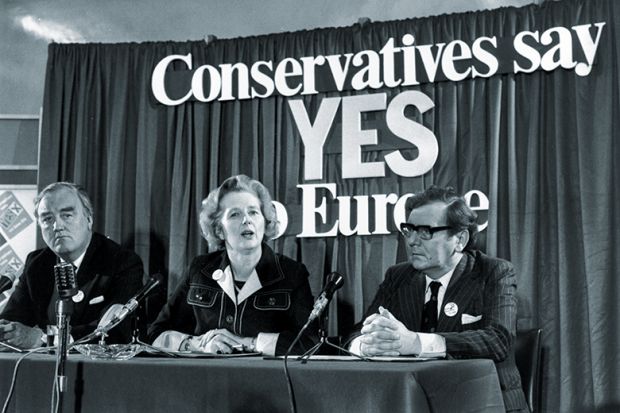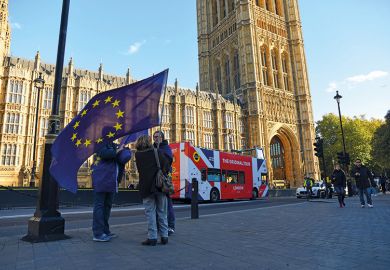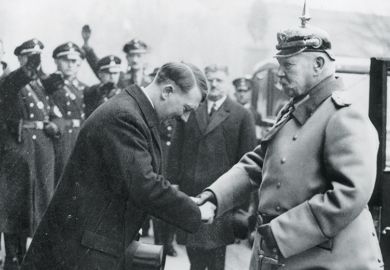In 1975, Britain held its first national referendum on whether to remain in the European Communities (as the European Union then was), which we had joined in 1973. The outcome was a resounding victory by a two-to‑one majority for the pro-Europeans. “The verdict”, prime minister Harold Wilson declared, had “been given by a bigger vote, by a bigger majority than has been received by any government in any general election”. He then went on to declare, somewhat over-optimistically: “It means that 14 years of national argument are over.”
There is already a massive literature on this subject. The best source is probably The 1975 Referendum, a book published very shortly after that vote by David Butler and Uwe Kitzinger that is based heavily on interviews with those involved. Does Robert Saunders, a lecturer at Queen Mary University of London, have anything to add? He has been able to consult the private papers of politicians and campaign groups that were not available in 1975, and claims originality of approach in that he is concerned less “with high politics than with public attitudes”. Indeed he believes that the referendum offers “a window into the political and social history of the 1970s”.
But Yes to Europe! is in fact less unorthodox than Saunders suggests. It is beautifully written, and provides a thoroughly reliable and stimulating account of one of the most important events in Britain’s post-war history. But Saunders’ researches tend to confirm rather than overturn the conclusions of previous writers.
Anyone who believes that the 2016 referendum was uniquely demagogic would do well to read Yes to Europe! In 1975, Edward Heath declared that “a vote against the Market could lead to a Soviet invasion of Europe” and predicted a return to ration books and food shortages. He went on to suggest that Tony Benn would have welcomed a Nazi invasion in 1940. Enoch Powell compared the pro-marketeers to the men of Munich, while Ian Paisley’s Free Presbyterian Church declared that a vote for Europe, as well as being a vote for “Rome”, was also a vote for “Dictatorship” and “Anti-Christ”. Paisley himself insisted that the European Community owed “its first allegiance to the Pope and recognises the ultimate authority of the Vatican”. These cries make the promise of £350 million a week extra for the health service seem positively statesmanlike. But the truth is that referendums and elections never have borne and never will bear the least resemblance to academic seminars.
The 1975 referendum was held in a quite different climate from that of 2016, a climate of fear. While the Continent seemed to be thriving, Britain was the sick man of Europe. Inflation was nearing 25 per cent, the highest ever recorded, unemployment was rising and there was apprehension of the growing power of the trade unions, which had brought down the Heath government in February 1974. The post-war political order seemed to be disintegrating. In November 1974, the Cabinet held an all-day session at Chequers, and, according to Benn, “Jim Callaghan [the foreign secretary] pessimistically said that every morning when he shaved he thought that he should emigrate but by the time he had eaten breakfast, he realised there was nowhere else to go.” One of Britain’s European Commissioners, Sir Christopher Soames, declared: “This is no time for Britain to be considering leaving a Christmas club, let alone the Common Market.”
Political alignments in 1975 were, curiously, almost directly contrary to what they were to be in 2016. Most Conservatives were pro-European, and their new leader, Margaret Thatcher, sought to outdo her supplanted predecessor, Heath, in fervour for the cause. Labour was divided, but the membership was Eurosceptic, and the Labour Conference rejected continued membership by two to one. The pro-Europeans, led by Roy Jenkins, felt beleaguered. The prime political purpose of the referendum, however, had been to hold Labour together, just as the prime purpose in 2016 was to hold the Conservatives together. Perhaps neither succeeded. The Scottish and Welsh nationalists were the only parties in their respective countries to campaign for a “no” vote. The fear then, in contrast with 2016, was that, while the rest of the United Kingdom might vote “yes”, Scotland would vote “no” and so ignite a constitutional crisis. Only the Liberals, now the Liberal Democrats, remained consistent in their support for European integration.
Europe has been a toxic issue in British politics. It has arguably destroyed five Conservative prime ministers – Harold Macmillan, Heath, Thatcher, John Major and David Cameron – and might well destroy a sixth, Theresa May. Wilson remains the only prime minister to have triumphed over Europe. “People say I have no sense of strategy, cannot think strategically,” he told his private secretary the day after the referendum. “Only an idiot”, declared Neil Kinnock, then a Eurosceptic, “would ignore or resent a majority like this. We’re in for ever.” But, as Butler and Kitzinger demonstrated, the referendum did not show that the British had become enthusiastic Europeans. Support for Europe was wide but not deep.
The most original part of Yes to Europe! is its conclusion. Most observers interpreted the 1975 referendum as a crushing blow to the left because it had shown that neither Michael Foot, Benn nor the Eurosceptic trade unions were in touch with public opinion. It also seemed to have resolved the conflict within the Labour Party. Indeed, the 1975 party conference did not discuss the issue at all. But, as Saunders points out, “this was a truce, not a settlement”. The left did not accept the result as final; and by 1983, under the leadership of Foot, Labour’s election manifesto committed the party to leaving Europe without a further referendum.
Despite the large “remain” majority in 1975, Saunders argues that it was the “leavers” in the Labour Party – Foot, Benn and Kinnock – who won the internal party battle and whose careers advanced, while the remainers – Jenkins, David Owen and Shirley Williams – were sidelined and broke with the party in 1981 to form the Social Democratic Party.
But perhaps Saunders exaggerates. The left had been advancing well before the referendum, a consequence less of Europe than of the perceived failures of the 1964-70 Wilson government, which seemed to many a sign of the failure of social democracy itself. The European issue gave the left momentum, but was not the fundamental reason for its success.
The year 1950, when Britain had been invited to join the European Coal and Steel Community, precursor of the EU, saw the beginning of Britain’s engagement with European integration. But Labour’s foreign secretary, Ernest Bevin, declined the invitation, saying that once one opened that Pandora’s box, one never knew what Trojan horses would fly out. The box is now being closed, but the Trojan horses do not seem to have disappeared.
At the final rally of “Britain in Europe” in 1975, Jenkins warned that for Britain to leave Europe would be to enter “an old people’s home for fading nations”. He doubted whether it would be “a very comfortable old people’s home. I do not like the look of some of the prospective wardens.” The wardens then would have been Powell and Benn. Who, one wonders, will be our wardens if and when the Pandora’s box is finally locked and sealed?
Vernon Bogdanor is professor of government, King’s College London. His pamphlet, Brexit and Our Unprotected Constitution, was recently published by the Constitution Society.
Yes to Europe! The 1975 Referendum and Seventies Britain
By Robert Saunders
Cambridge University Press
422pp, £24.99
ISBN 9781108425353
Published 31 March 2018

The author
Robert Saunders, senior lecturer in modern British history at Queen Mary University of London, was born in Somerset, grew up in the West Country and read modern history at the University of Oxford. He stayed on for a master’s and a doctorate, taught both history and politics at a number of colleges and then moved to QMUL in 2013. He has also taught on Georgetown University’s British Studies programme.
His early focus on the Victorian period led to his first book, Democracy and the Vote in British Politics, 1848-1867: The Making of the Second Reform Act (2011), but Saunders has since turned to more recent times with Making Thatcher’s Britain (2012) and now Yes to Europe! He describes his current research interests as “political history, intellectual history and the influence of America on British political thought”, with a particular stress on “the interplay between the history of ideas and the practice of politics, exploring the values, prejudices and ways of thinking that frame political action”.
Saunders sometimes blogs about current affairs. He explored, for example, the paradox of the 2017 general election, namely that “an election inspired by Brexit ignored the single biggest issue confronting the country”. Yet he also described 8 June as “a good night for democracy. The two most dangerous tendencies in our political system – the long withdrawal of the young from electoral politics, and the imbalance of power between generations – have been decisively and spectacularly reversed. Young voters swept through the polling stations like an avenging army; and, far from piling up uselessly in already safe seats, their votes carried Tory citadels like Kensington and Canterbury. For this – wherever one stands on his policies – Corbyn deserves enormous credit. He set out to re-engage young people with democracy, and our politics will be healthier as a result.”
Matthew Reisz
POSTSCRIPT:
Print headline: When Remainers won the day
Register to continue
Why register?
- Registration is free and only takes a moment
- Once registered, you can read 3 articles a month
- Sign up for our newsletter
Subscribe
Or subscribe for unlimited access to:
- Unlimited access to news, views, insights & reviews
- Digital editions
- Digital access to THE’s university and college rankings analysis
Already registered or a current subscriber?







